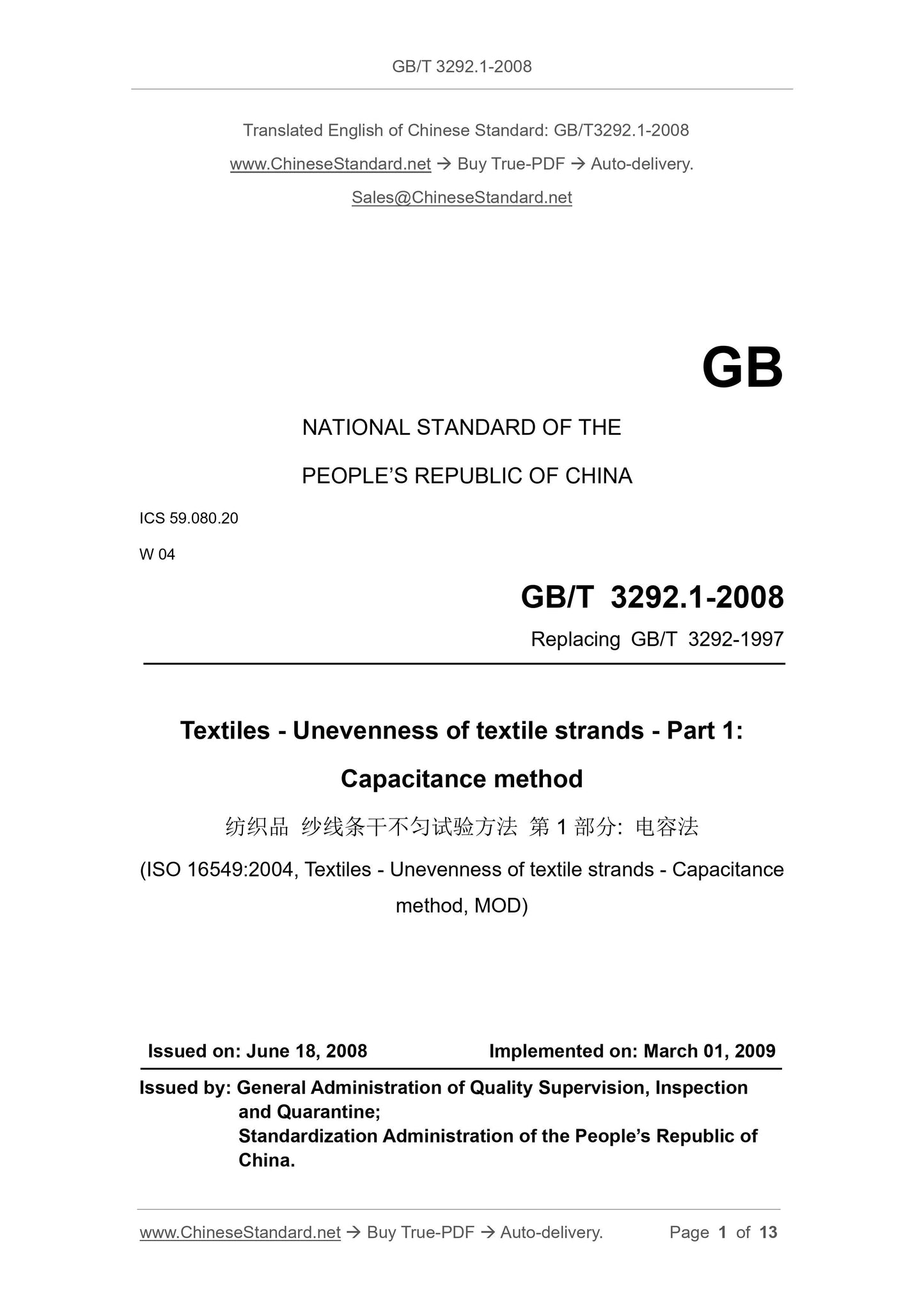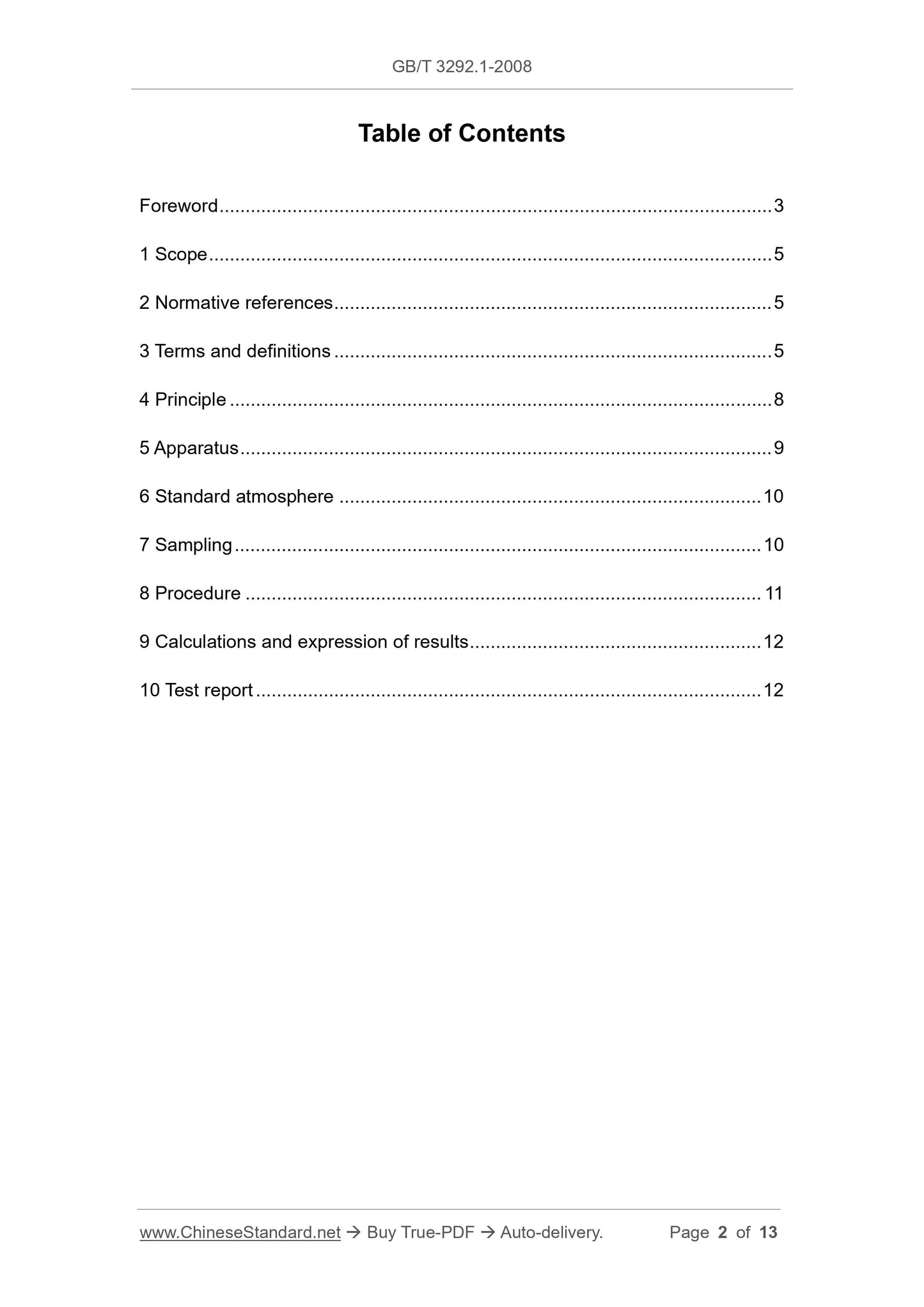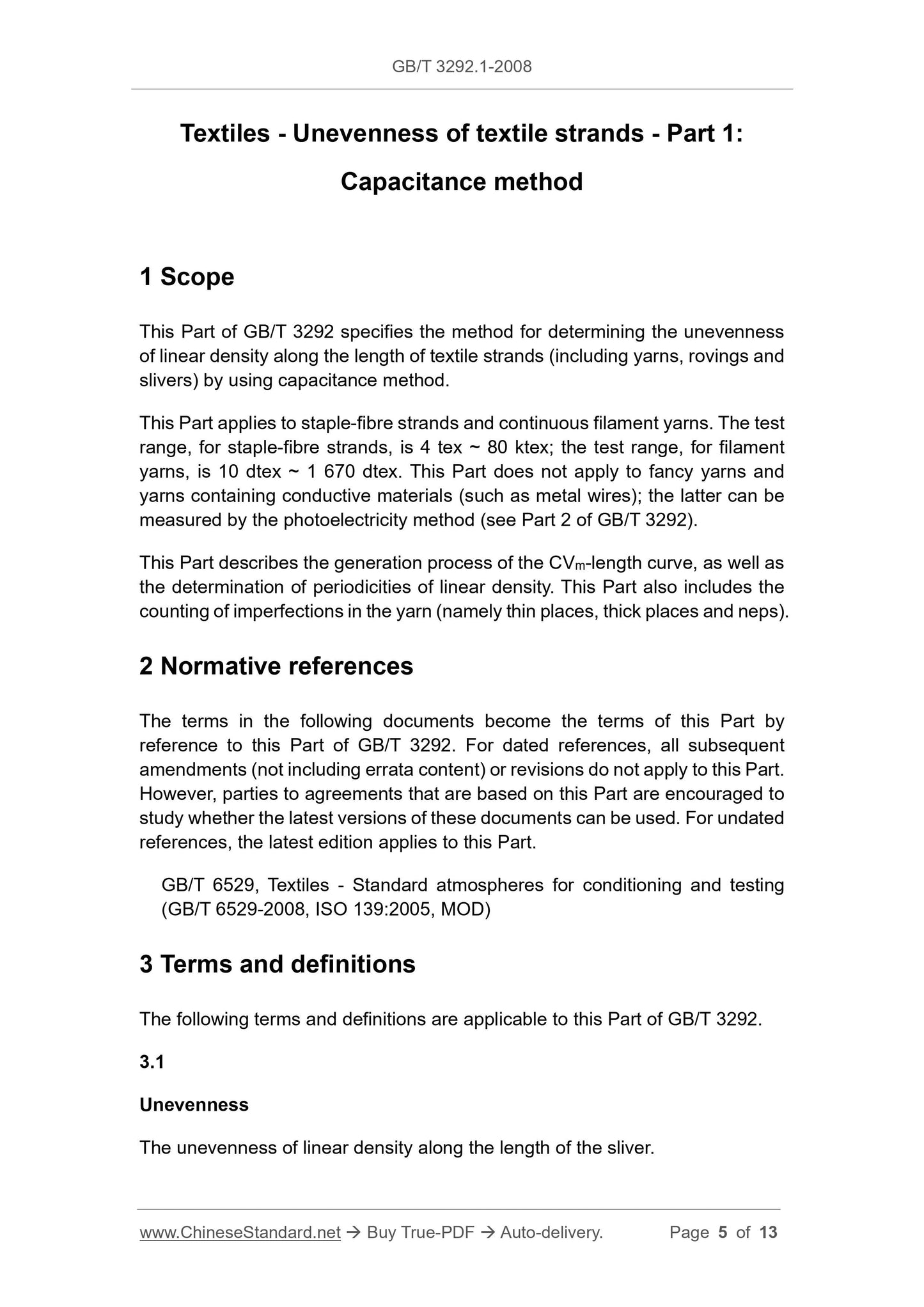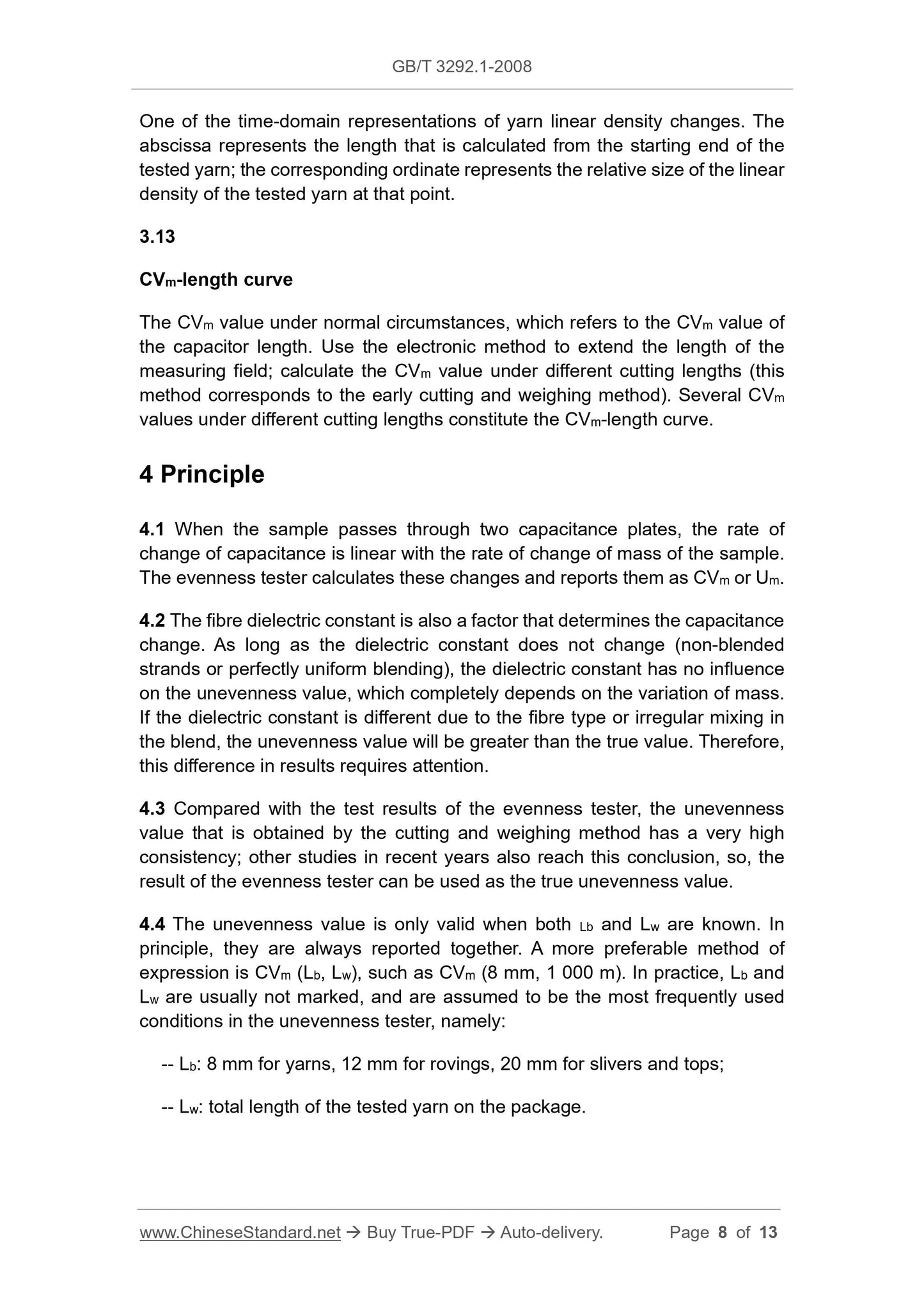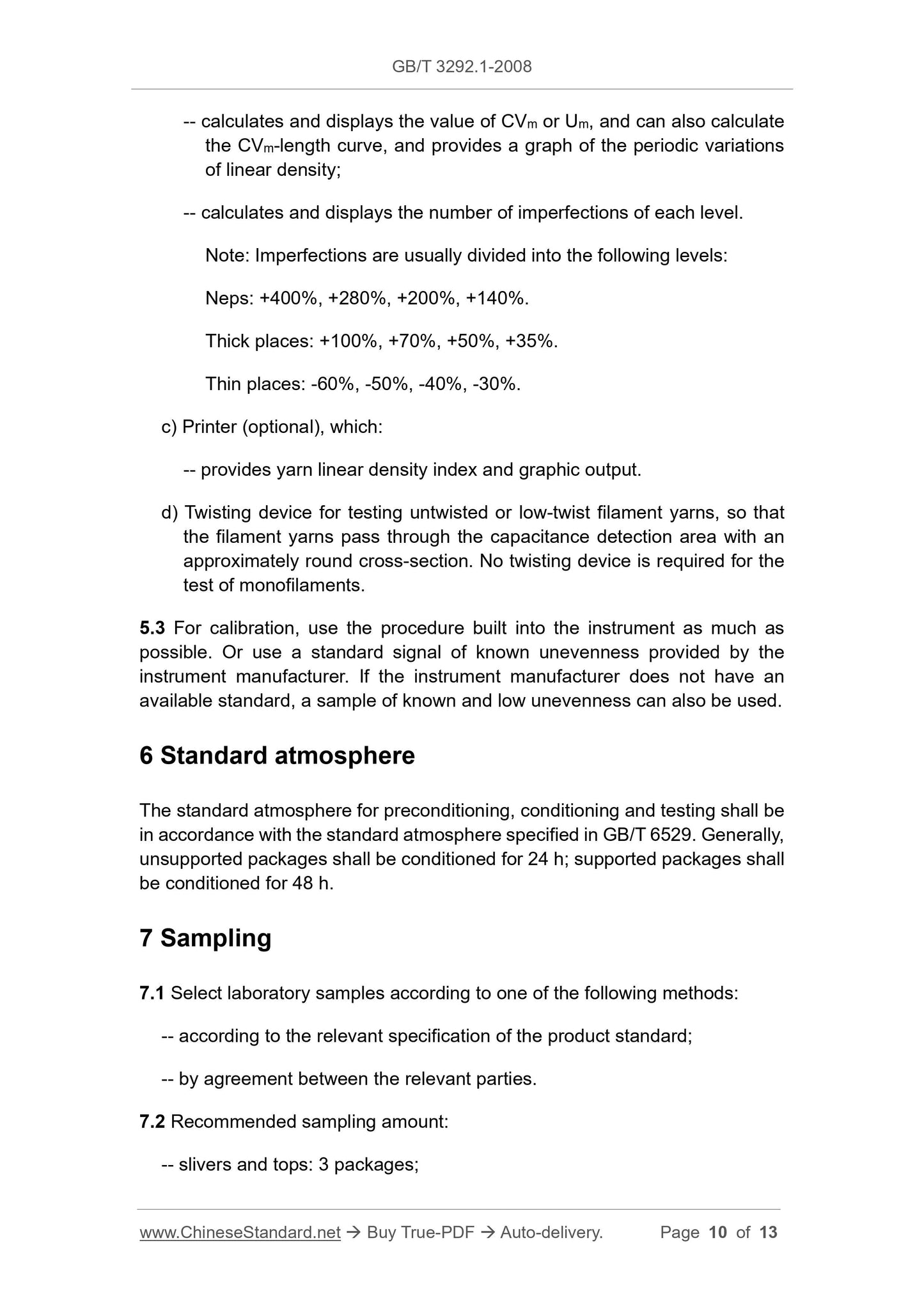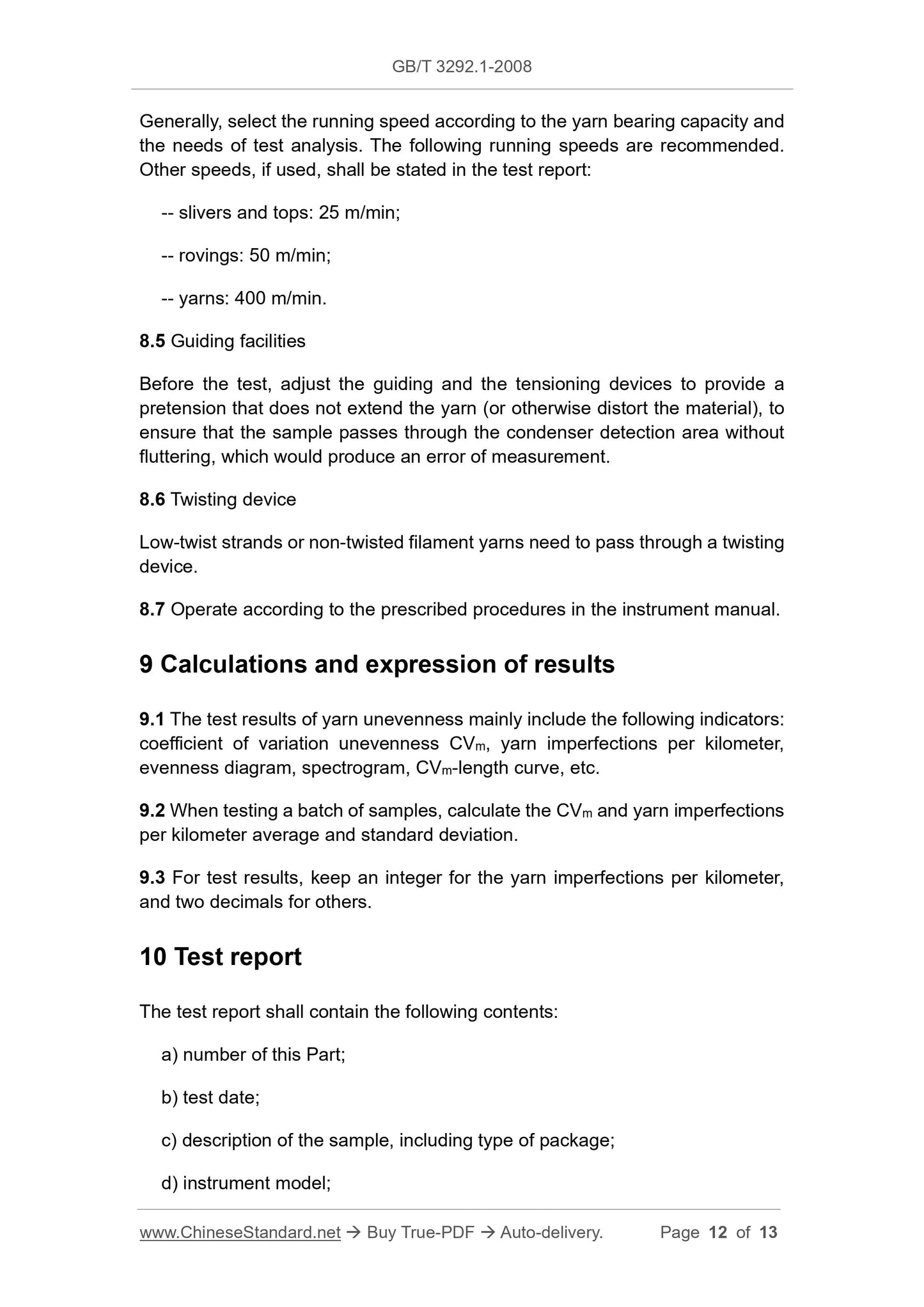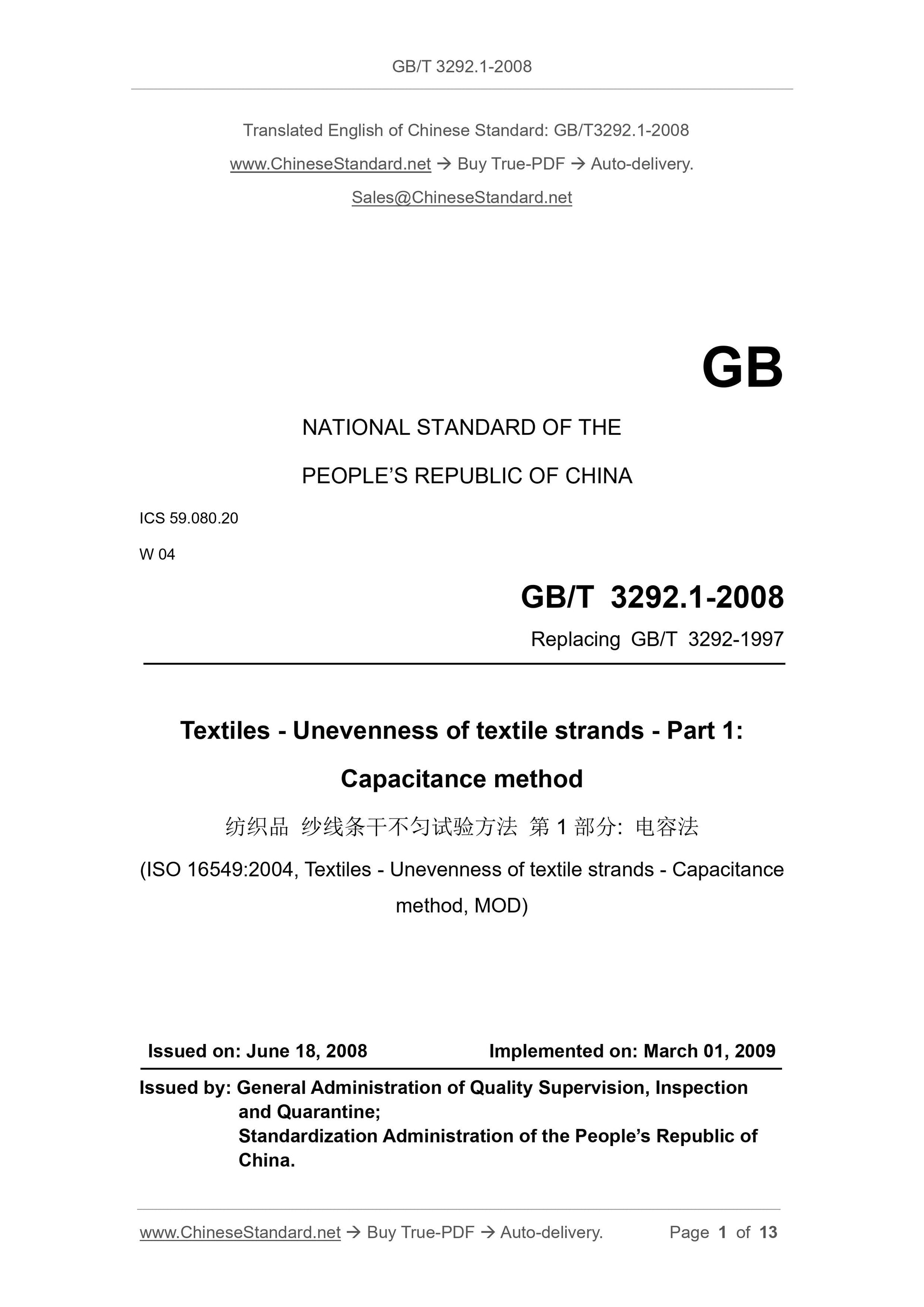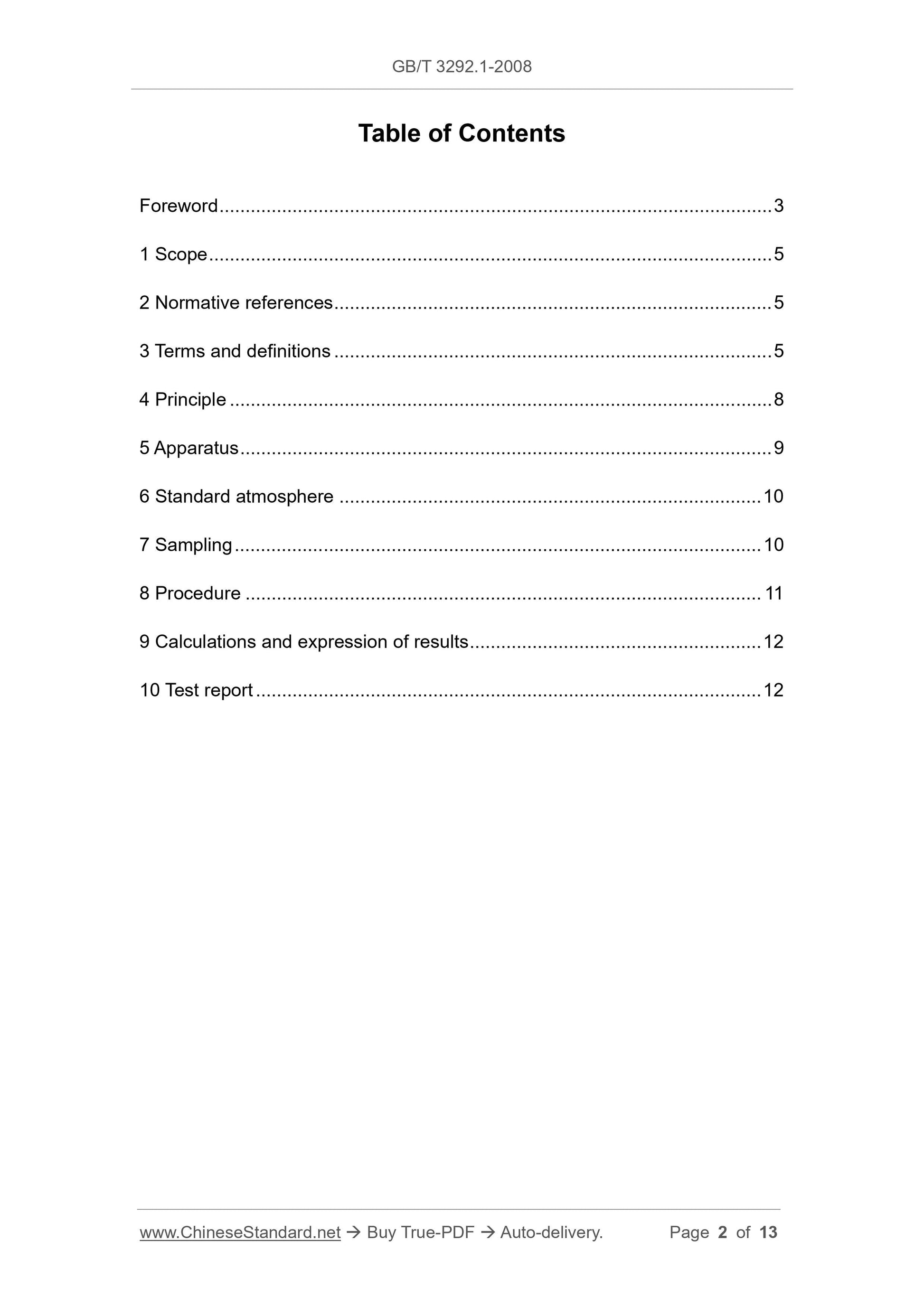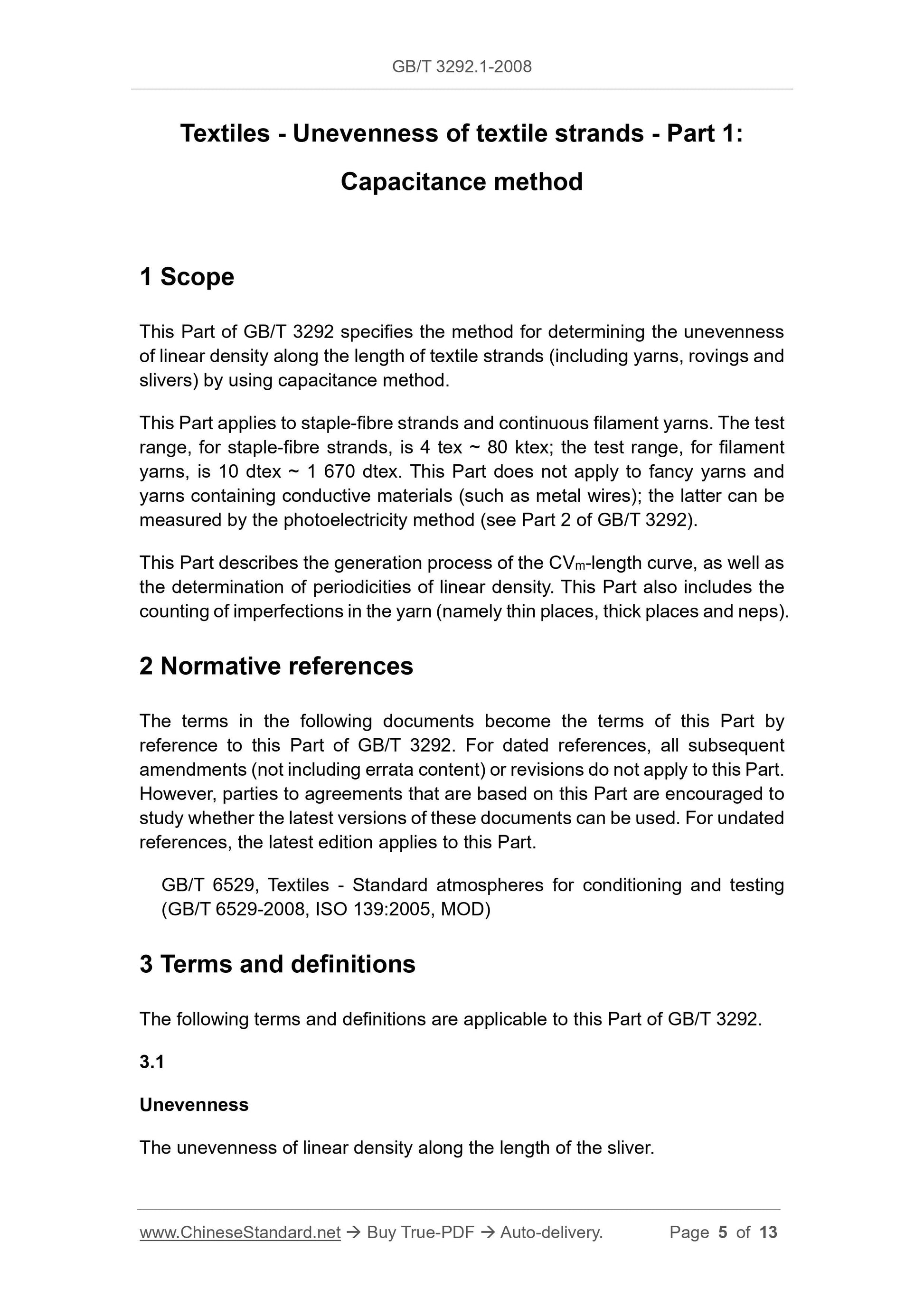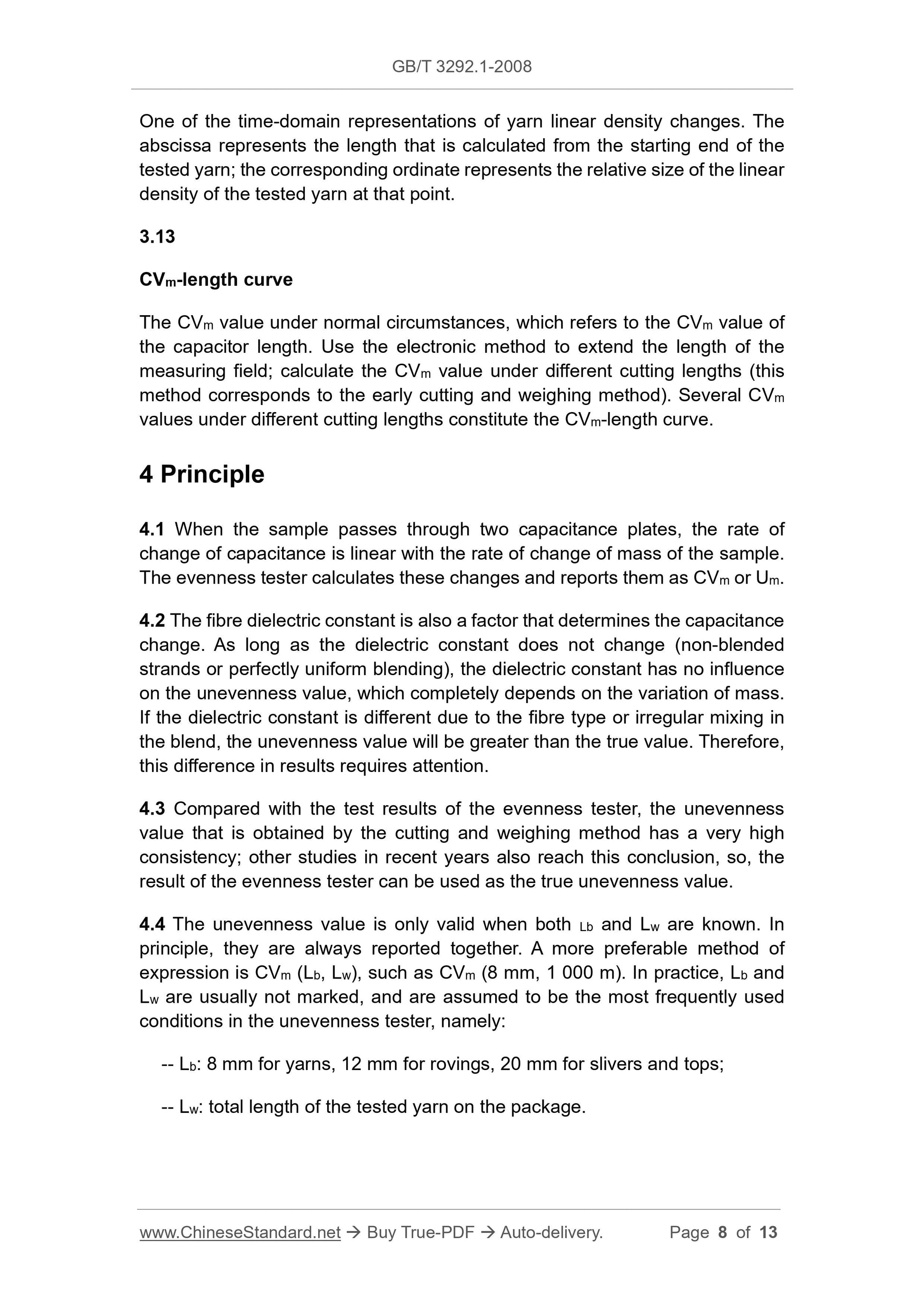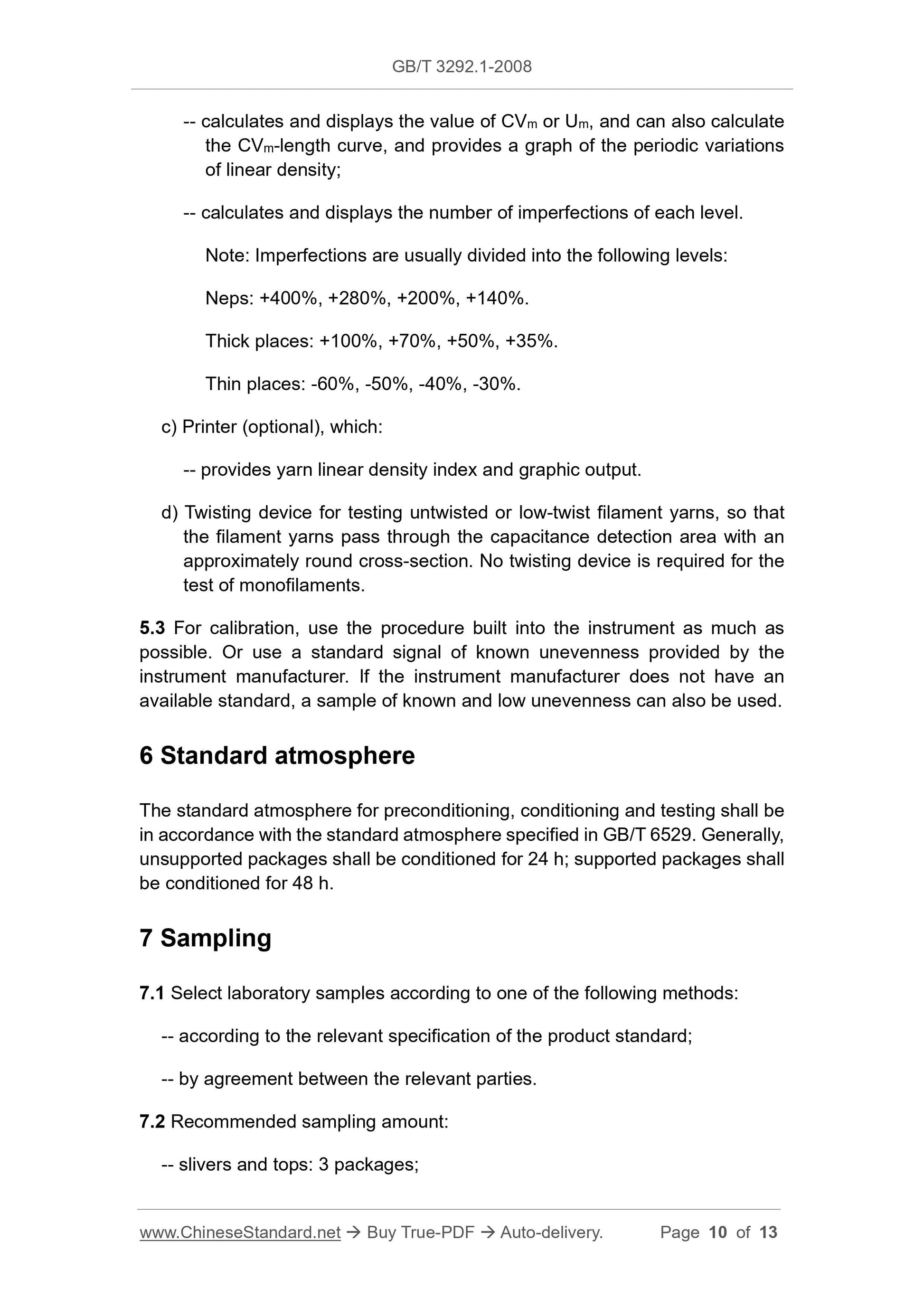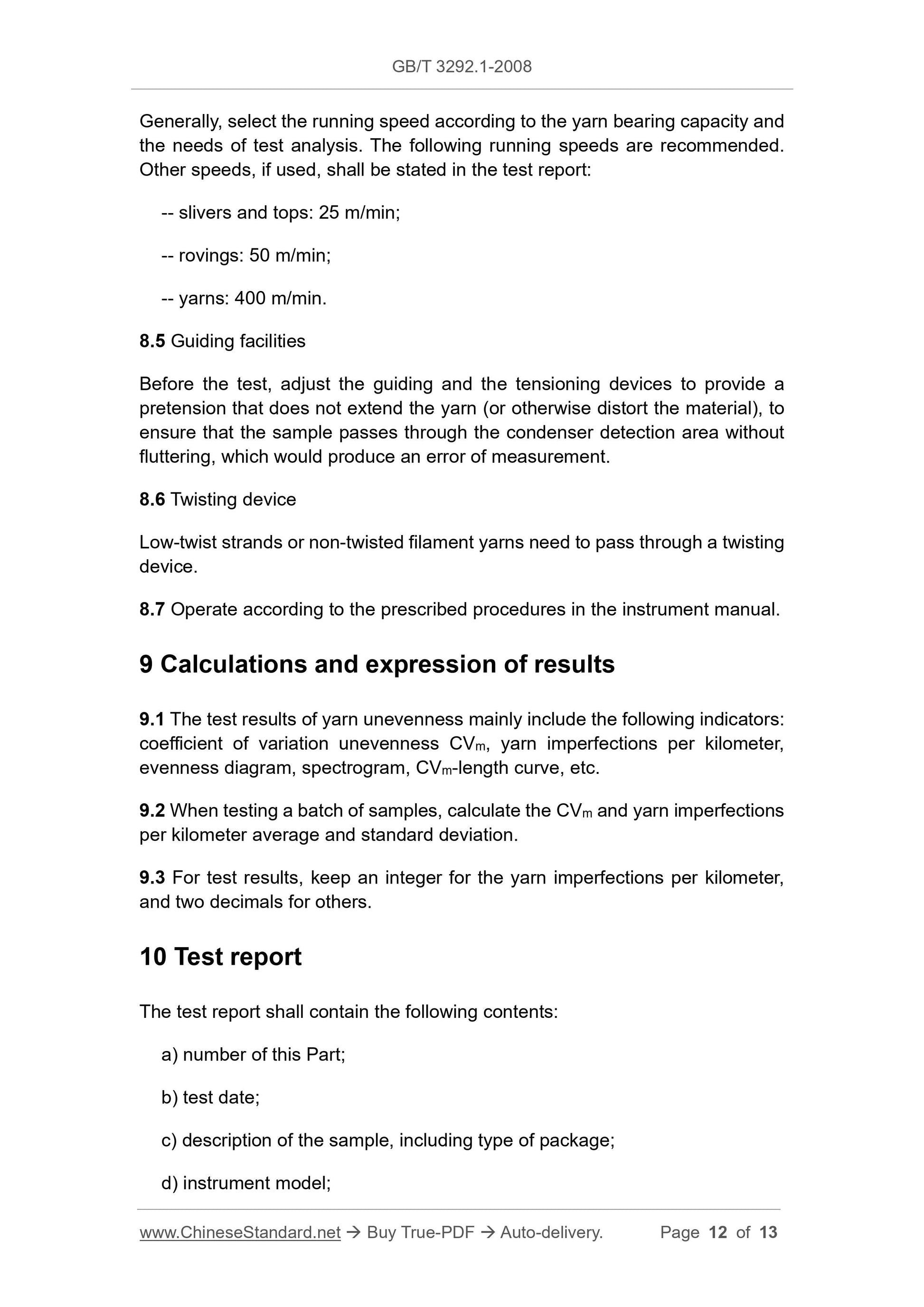1
/
of
6
www.ChineseStandard.us -- Field Test Asia Pte. Ltd.
GB/T 3292.1-2008 English PDF (GB/T3292.1-2008)
GB/T 3292.1-2008 English PDF (GB/T3292.1-2008)
Regular price
$140.00
Regular price
Sale price
$140.00
Unit price
/
per
Shipping calculated at checkout.
Couldn't load pickup availability
GB/T 3292.1-2008: Textiles -- Unevenness of textile strands -- Part 1: Capacitance method
Delivery: 9 seconds. Download (and Email) true-PDF + Invoice.Get Quotation: Click GB/T 3292.1-2008 (Self-service in 1-minute)
Newer / historical versions: GB/T 3292.1-2008
Preview True-PDF
Scope
This Part of GB/T 3292 specifies the method for determining the unevennessof linear density along the length of textile strands (including yarns, rovings and
slivers) by using capacitance method.
This Part applies to staple-fibre strands and continuous filament yarns. The test
range, for staple-fibre strands, is 4 tex ~ 80 ktex; the test range, for filament
yarns, is 10 dtex ~ 1 670 dtex. This Part does not apply to fancy yarns and
yarns containing conductive materials (such as metal wires); the latter can be
measured by the photoelectricity method (see Part 2 of GB/T 3292).
This Part describes the generation process of the CVm-length curve, as well as
the determination of periodicities of linear density. This Part also includes the
counting of imperfections in the yarn (namely thin places, thick places and neps).
Basic Data
| Standard ID | GB/T 3292.1-2008 (GB/T3292.1-2008) |
| Description (Translated English) | Textiles -- Unevenness of textile strands -- Part 1: Capacitance method |
| Sector / Industry | National Standard (Recommended) |
| Classification of Chinese Standard | W04 |
| Classification of International Standard | 59.080.20 |
| Word Count Estimation | 8,826 |
| Date of Issue | 2008-06-18 |
| Date of Implementation | 2009-03-01 |
| Older Standard (superseded by this standard) | GB/T 3292-1997 |
| Quoted Standard | GB/T 6529 |
| Adopted Standard | ISO 16549-2004, MOD |
| Regulation (derived from) | National Standard Approval Announcement 2008 No.10 (Total No.123) |
| Issuing agency(ies) | General Administration of Quality Supervision, Inspection and Quarantine of the People's Republic of China, Standardization Administration of the People's Republic of China |
| Summary | This standard specifies the use of capacitive along the yarn evenness tester (including yarn, rovings and slivers) Determination of linear density unevenness of its length. This section applies to the short chemical fiber yarn and continuous filament yarn. For short fiber strand test range from 4 tex ~ 80ktex, test range for filament yarn from 10dtex ~ 1670dtex. This section does not apply to fancy yarn and containing a conductive material (such as wire) yarns, the latter can be used to measure optical method (see GB/T 3292 for Part 2). |
Share
